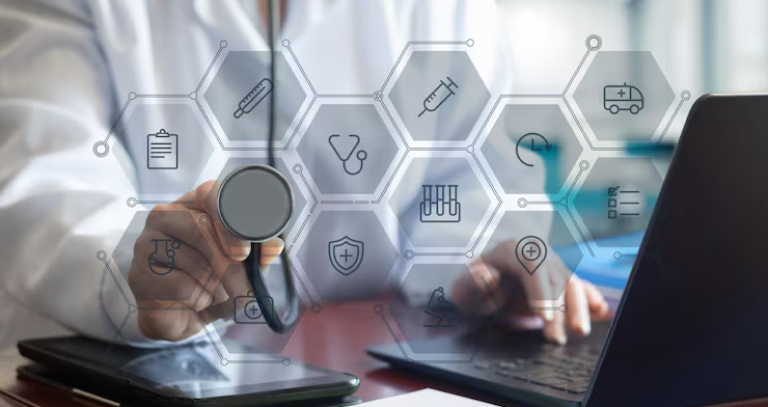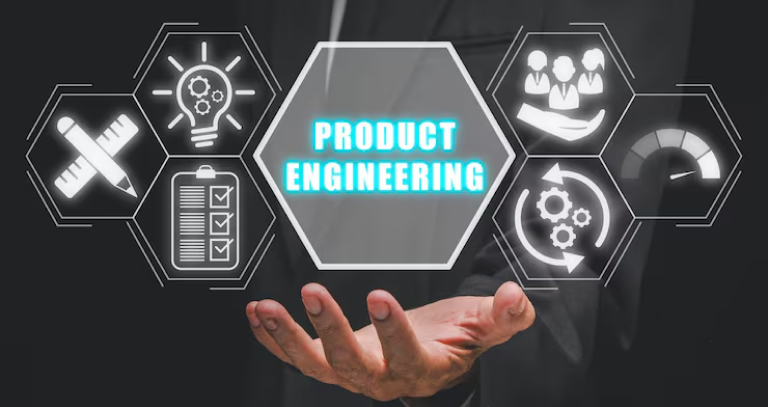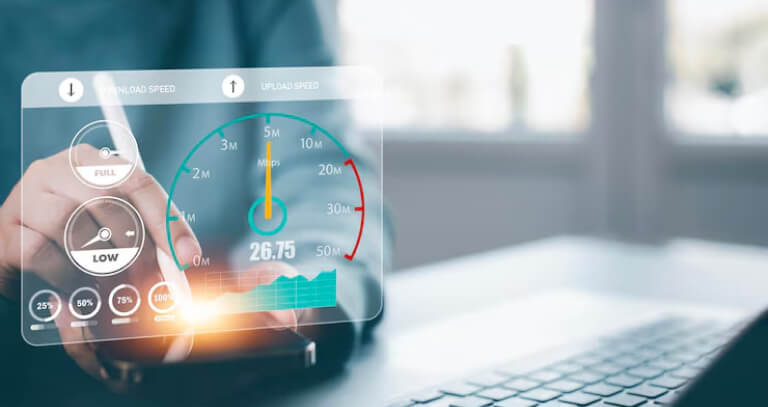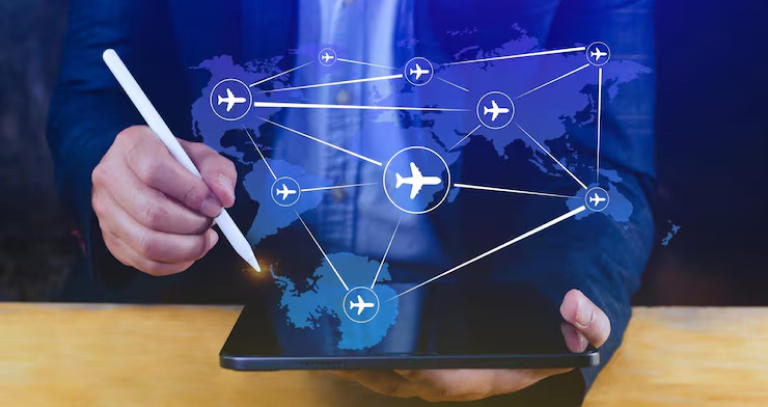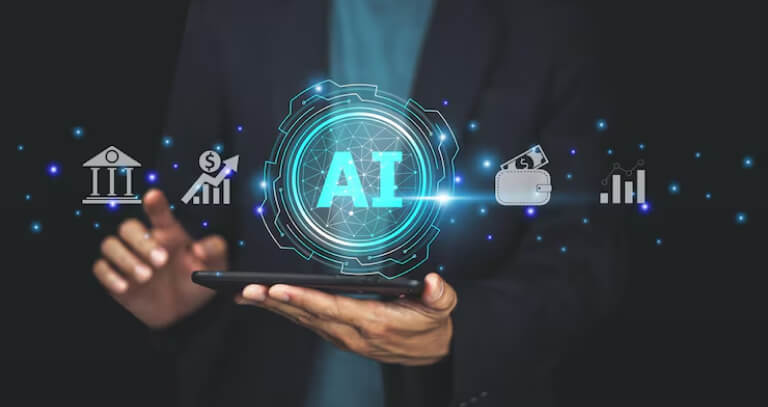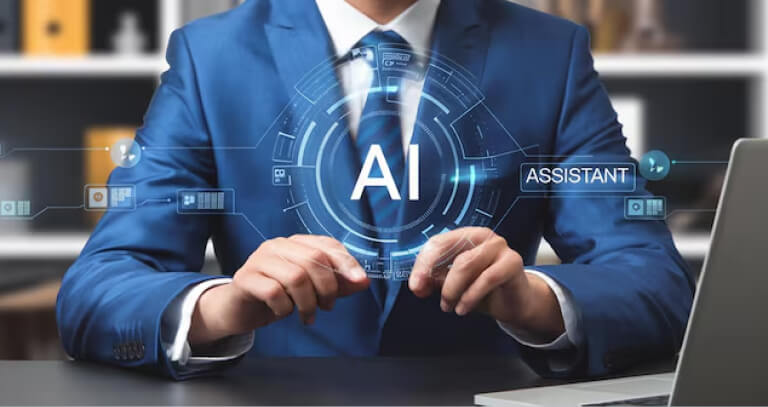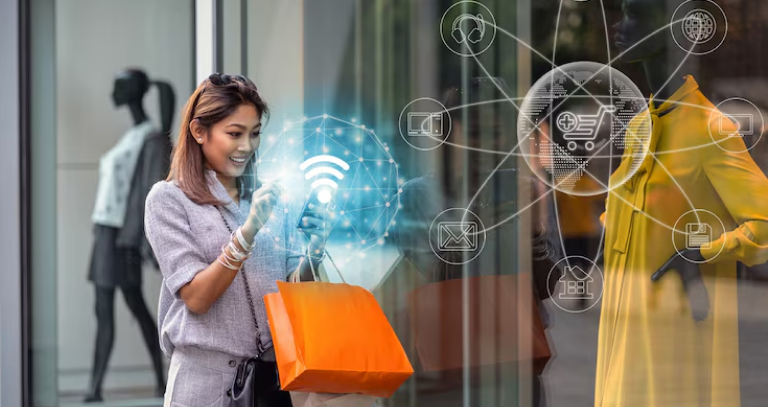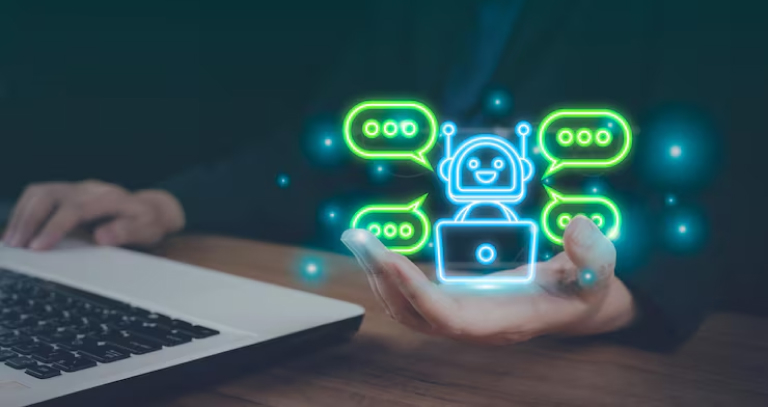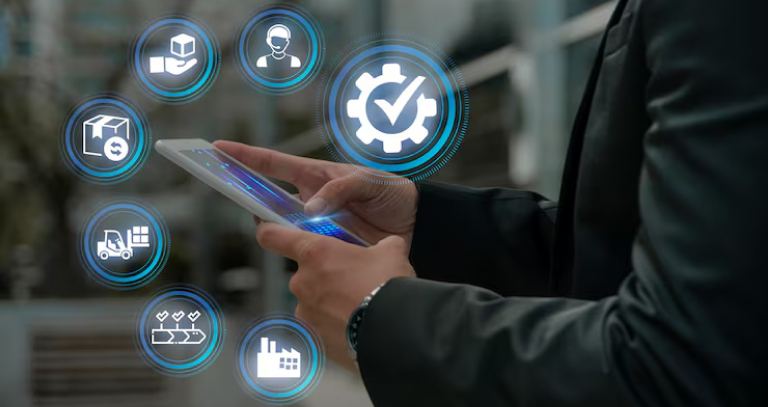Top Applications of IoT Across Industries in 2025
Ditstek Blogs
The Internet of Things is quietly changing how we connect with the world. From smart thermostats that adjust home temperatures to wearable devices that track our health, IoT connects everything.
But the real value of IoT is unfolding within industries as it connects systems, improves efficiency, and delivers actionable data where decisions are made.
IoT solutions are giving leadership teams the kind of operational clarity that once took weeks to gather, now delivered in real time and integrated into workflows.
From real-time monitoring to predictive automation, connected systems are closing the gap between data and action. For manufacturers, it's minimizing downtime. In healthcare, it's improving patient outcomes. In logistics, it’s driving efficiency at scale.
IoT isn’t about experimenting with sensors or dashboards anymore. It’s about building a more responsive, resilient organization where data drives action.
In this blog, we’ll outline where IoT is already solving business-critical problems across sectors. The focus is practical: where it’s delivering measurable ROI, how it fits into transformation roadmaps, and why ignoring it may leave operational value on the table.
Let’s get into the specifics.
Discover How IoT Can Transform Your Business!
Want to leverage IoT for smarter operations and faster growth? Get expert guidance tailored to your industry.
What Are Applications of IoT?
The Internet of Things (IoT) enables devices and systems to collect and exchange data automatically. This connectivity supports applications that improve operational efficiency, reduce costs, and enhance decision-making.
Key IoT applications include:
- Predictive Maintenance: Sensors monitor equipment health and predict failures, reducing downtime and maintenance costs.
- Asset Tracking: Real-time location data improves inventory management and logistics efficiency.
- Process Automation: Automated controls adjust operations based on data inputs, increasing consistency and speed.
- Remote Monitoring: Systems provide continuous oversight of operations, enabling faster responses to issues.
- Data Integration: Aggregating data from multiple sources allows comprehensive analysis and better forecasting.
For decision-makers, the priority is identifying which applications align with business goals and deliver measurable return on investment. Implementing IoT strategically can reduce risk, improve resource allocation, and support scalable growth.
Examples of IoT Applications
To understand IoT’s impact, it helps to look at concrete examples across different domains:
- Smart Home Assistants: Devices that control lighting, temperature, and security based on user preferences, improving energy efficiency and convenience.
- Fitness Trackers: Wearables that monitor health metrics like heart rate and activity levels, providing users and healthcare providers with actionable data.
- Smart Traffic Signals: Systems that adjust signal timing dynamically to reduce congestion and improve traffic flow in cities.
- Predictive Maintenance Sensors: Sensors on industrial equipment that detect early signs of wear or failure, enabling scheduled maintenance before costly breakdowns occur.
- Inventory Tracking Systems: Real-time tracking of goods in warehouses and supply chains to minimize stockouts and optimize inventory levels.
- Smart Irrigation Systems: Sensors that monitor soil moisture and weather conditions to automate watering, conserving water while maintaining crop health.
- Smart Meters: Devices that provide real-time monitoring of electricity, gas, or water usage, allowing utilities and customers to manage consumption more efficiently.
- Remote Health Monitoring: Systems that collect patient data outside clinical settings, enabling early intervention and reducing hospital visits.
The following sections review how these applications function across key industries, demonstrating practical benefits and investment priorities.
Curious About IoT Opportunities for Your Industry?
We’ll help you identify high-impact IoT use cases and build a custom roadmap.
Applications of IoT in Different Industries

IoT adoption varies by sector, with each industry leveraging connected devices to solve specific operational challenges and unlock new efficiencies. Below is a snapshot of key applications across industries:
Applications Of IoT In Smart Cities
Urban centers face growing demands on infrastructure, resources, and services. IoT technologies offer scalable solutions to improve city management, reduce costs, and enhance residents’ quality of life.
How IoT Applies:
IoT systems collect and analyze data from urban assets in real time. This continuous insight enables cities to optimize traffic flow, manage energy consumption, and respond proactively to environmental and infrastructure challenges.
Key Use Cases:
- Traffic Management: IoT sensors and cameras monitor vehicle flow, enabling dynamic signal adjustments that reduce congestion and emissions.
- Air Quality Monitoring: Distributed sensors track pollution levels across neighborhoods, guiding targeted interventions and informing residents.
- Smart Lighting: Streetlights equipped with motion sensors adjust brightness based on activity and natural light, cutting energy use while maintaining safety.
- Flood Detection: Sensors monitor water levels in vulnerable zones, providing early warnings to emergency services and residents.
- Waste Management: Connected bins report fill levels, optimizing collection routes and reducing operational costs.
DITSTEK’s Delivered Solution:
At the client’s request, DITSTEK developed an AI-driven parking management system designed to improve urban mobility. By combining IoT sensor data with AI-powered analytics, the solution offers real-time parking availability, automated license plate recognition, and dynamic pricing models. This targeted approach helps cities reduce congestion, optimize parking utilization, and enhance user convenience. Learn more about DITSTEK's smart parking solution.
Applications Of IoT in Healthcare & Wearables
Healthcare is rapidly evolving through IoT by enabling continuous patient monitoring, reducing hospital visits, and improving outcomes. Connected devices collect real-time health data that supports early diagnosis and personalized treatment plans.
How IoT Applies:
IoT devices gather critical health metrics remotely, allowing care providers to monitor patients outside traditional clinical settings. This enhances chronic disease management, supports preventive care, and reduces response times in emergencies.
Key Use Cases:
- Remote Patient Monitoring: Devices track vitals such as heart rate, blood pressure, and oxygen levels, enabling early intervention and reducing hospital admissions.
- Wearable Fitness Trackers: Collect data on activity, sleep, and vital signs to promote wellness and inform healthcare decisions.
- IoT-Enabled Medical Devices: Smart insulin pumps, blood pressure monitors, and oxygen sensors transmit data to healthcare providers for real-time adjustments.
DITSTEK’s Delivered Solution:
At the client’s request, DITSTEK developed a SaaS-based IoT remote patient monitoring platform that consolidates real-time vitals from wearables and medical devices. This cloud-enabled system integrates with healthcare workflows to provide timely alerts and analytics, enabling proactive patient management and improving clinical outcomes. Learn more about the platform here.
Applications Of IoT in Industrial Automation / IIoT
Industrial IoT (IIoT) transforms manufacturing and heavy industries by connecting equipment, monitoring performance, and enabling predictive maintenance. This reduces downtime and operational costs while improving safety and efficiency.
How IoT Applies:
IIoT systems collect real-time data from machines and equipment to detect anomalies before failures occur. This data supports energy management, quality control, and process optimization, empowering managers to make data-driven decisions.
Key Use Cases:
- Predictive Maintenance: Sensors monitor machine health, identifying wear and preventing unexpected breakdowns through timely servicing
- Machine Health Monitoring: Continuous tracking of equipment conditions like temperature, vibration, and pressure to ensure optimal performance.
- Energy Analytics: Monitoring energy consumption across facilities to identify inefficiencies and reduce costs.
Applications of IoT in Smart Manufacturing
Smart manufacturing builds on IIoT by combining sensor data, automation, and AI software solutions to create highly efficient, self-correcting production environments. The focus is on agility, precision, and reducing waste.
How IoT Applies:
IoT-enabled systems offer real-time visibility into production lines, helping manufacturers detect inefficiencies, maintain consistent quality, and respond faster to demand shifts. Data flows directly from machines to analytics platforms, enabling instant decision-making.
Key Use Cases:
- Production Line Optimization: Sensors track throughput, cycle times, and bottlenecks, helping manufacturers fine-tune processes.
- Real-Time Process Visibility: Managers can monitor operations remotely and respond immediately to anomalies or slowdowns.
- Defect Detection & Quality Control: Integrated AI and IoT systems identify defects on the line, reducing manual inspection and improving output quality.
Applications of IoT in Agriculture
Agriculture is becoming increasingly data-driven. IoT technologies are helping farmers make faster, smarter decisions. From reducing waste to conserving resources, these IoT software solutions boost yields while minimizing inputs.
How IoT Applies:
Connected sensors monitor soil health, weather, crop conditions, and equipment in real time. This data enables precise control over irrigation, fertilization, and harvesting, improving both sustainability and profitability.
Key Use Cases:
- Soil Sensors: Measure moisture, pH, and nutrient levels to optimize planting and watering schedules.
- Weather-Based Irrigation: IoT systems adjust irrigation automatically based on weather forecasts and real-time field data.
- Livestock Tracking: Wearables track animal location, health, and behavior, improving herd management and reducing disease risks.
- Smart Farming Platforms: Integrate multiple IoT inputs into a central dashboard to guide daily decisions.
DITSTEK’s Delivered Solution:
DITSTEK has worked with clients to implement sensor-based monitoring solutions tailored to precision farming needs. These systems collect field-level data and provide actionable insights that help farmers conserve water, cut input costs, and increase crop output.
Applications Of IoT In Renewable Energy
In renewable energy, IoT is key to improving generation efficiency, managing distributed assets, and ensuring grid stability. From solar farms to wind turbines, connected systems are helping energy providers optimize performance and scale smarter.
How IoT Applies:
IoT devices monitor energy production, predict equipment failures, and balance supply with demand in real time. This visibility is essential for managing decentralized, weather-dependent systems across large geographies.
Key Use Cases:
- Performance Monitoring: Sensors track solar panel output or wind turbine efficiency to detect drops in performance and flag maintenance needs.
- Grid Load Balancing: IoT systems analyze consumption and generation data to dynamically balance load and prevent outages
- Smart Energy Management: Real-time data supports better decisions around energy storage, distribution, and consumption across facilities.
DITSTEK’s Delivered Solution:
For a client in the energy sector, DITSTEK built an IoT-based power consumption optimization platform. The system collects real-time data from energy assets, tracks consumption patterns, and provides actionable insights to reduce waste and lower operational costs. It supports smarter load distribution and energy forecasting, helping clients manage consumption more efficiently across renewable and traditional energy sources. Explore the project here.
Applications Of IoT In Logistics & Transportation
IoT is transforming logistics by increasing transparency, reducing risk, and improving delivery performance. Real-time data is the backbone of modern supply chains, keeping operations agile and predictable.
How IoT Applies:
Sensors and GPS trackers provide continuous visibility across fleets, cargo, and storage conditions. These insights help logistics teams manage routes, reduce delays, and maintain quality control from origin to destination.
Key Use Cases:
- Fleet Tracking: Real-time vehicle monitoring for route optimization, fuel efficiency, and maintenance scheduling.
- Cold Chain Monitoring: IoT sensors monitor temperature and humidity in transit, ensuring compliance for perishable goods.
- Asset Tracking: Live tracking of shipments to prevent loss, improve ETAs, and streamline inventory planning.
DITSTEK’s Delivered Solution:
DITSTEK designed and delivered an IoT-based indoor asset tracking system to streamline asset workflows within logistics environments. The platform provides real-time visibility into asset location and movement, improving resource utilization, reducing idle time, and increasing overall process efficiency. See the full project here.
Applications of IoT in Retail
IoT is helping retailers stay sharp in a high-pressure, margin-sensitive environment. From inventory accuracy to personalized experiences, connected systems are solving core operational challenges.
How IoT Applies:
IoT devices provide visibility into customer behavior, shelf stock levels, and in-store operations. With real-time data, retailers can reduce stockouts, optimize layouts, and deliver seamless, data-informed experiences.
Key Use Cases:
- Smart Shelves: Sensors detect low stock levels and automatically trigger restocking.
- Customer Behavior Analysis: Heatmaps and foot traffic data help retailers refine store layouts and promotions.
- Automated Inventory Management: RFID and IoT-based systems track products in real time, reducing shrinkage and manual errors.
- Personalized Shopping: IoT integrates with CRM tools to tailor in-store experiences based on preferences and behavior.
Applications of IoT in Marine & Aquatic Systems
IoT is being deployed underwater and across coastlines to support conservation, commercial fisheries, and maritime operations. It’s helping organizations monitor marine health, manage aquatic assets, and improve sustainability.
How IoT Applies:
Specialized underwater sensors, GPS trackers, and satellite-connected buoys gather data on ocean conditions, wildlife movements, and human activities. These insights support environmental management, fishing operations, and offshore infrastructure maintenance.
Key Use Cases:
- Environmental Monitoring: IoT sensors track water temperature, pH, salinity, and oxygen levels to monitor ocean health and detect pollution early.
- Aquaculture Management: Smart feeding systems and underwater cameras monitor fish behavior, health, and habitat conditions in real time.
- Vessel & Equipment Tracking: GPS and sensor systems track boat positions, maintenance status, and safety compliance.
- Coral Reef & Wildlife Protection: Sensors and camera networks help scientists track biodiversity and detect changes in sensitive ecosystems.
Applications of IoT in Mining
Mining operations are complex, hazardous, and capital-intensive. IoT is playing a critical role in improving worker safety, optimizing equipment usage, and enhancing real-time decision-making underground and above.
How IoT Applies:
Sensors embedded in machinery, vehicles, and the mine environment track performance, predict failures, and monitor safety parameters. These systems feed data to central dashboards for quick insights into both productivity and risk.
Key Use Cases:
- Predictive Maintenance: Monitor heavy equipment in real time to avoid unplanned downtime and costly breakdowns.
- Worker Safety Monitoring: Wearables detect exposure to harmful gases, monitor location, and trigger alerts in emergencies.
- Environmental Monitoring: Sensors track seismic activity, gas leaks, and structural shifts to improve hazard detection.
- Autonomous Operations: IoT supports the automation of haulage and drilling systems, reducing human exposure to danger zones.
Applications of IoT in Environmental & Disaster Management
IoT is playing a vital role in strengthening environmental monitoring and disaster response systems. For governments, NGOs, and infrastructure planners, it’s becoming essential for early warning, risk mitigation, and resource deployment.
How IoT Applies:
Connected sensors are deployed in forests, rivers, coastal zones, and urban infrastructure to track environmental conditions in real time. These systems help detect anomalies, trigger alerts, and feed data into emergency management platforms.
Key Use Cases:
- Flood & Landslide Monitoring: Sensors measure water levels, soil moisture, and slope stability to warn of potential disasters.
- Wildfire Detection: Remote sensors and thermal cameras monitor temperature spikes, wind speed, and air composition in vulnerable areas.
- Air Quality & Climate Monitoring: IoT stations track pollution, greenhouse gases, and temperature variations to guide policy decisions.
- Remote Sensing: In difficult terrain or disaster zones, IoT devices provide crucial insights without the need for human presence.
Want Real-Time Insights and Automation?
From manufacturing to healthcare, we help businesses adopt IoT the right way.
How DITSTEK Is Powering IoT Innovation Across Sectors

DITSTEK brings deep technical expertise and a client-focused approach to IoT development, delivering solutions that solve real-world challenges across industries. The company’s strength lies in creating tailored IoT platforms that seamlessly integrate with existing workflows while providing real-time, actionable data.
Industry-Specific Solutions
DITSTEK’s portfolio spans smart cities, healthcare, logistics, energy, and more. Each solution is designed to address unique sector challenges, whether it’s optimizing urban mobility through AI-driven parking management, enabling remote patient monitoring for healthcare providers, or delivering iot asset tracking systems that increase operational visibility in logistics.
Tailored Development
DITSTEK doesn’t believe in one-size-fits-all. Its engineering teams work closely with clients to understand operational realities, designing IoT platforms that fit business goals and scale with evolving needs. From sensor integration to data analytics dashboards, every component is customized to maximize ROI and minimize disruption.
Real-Time Data Systems
At the core of DITSTEK’s IoT offerings is the emphasis on delivering real-time insights. Their platforms ensure that decision-makers have instant access to critical metrics whether it’s equipment health, environmental conditions, or asset location. This immediacy supports faster, smarter decisions and enhances responsiveness across operations.
The Future of IoT: Smarter, Safer, More Autonomous

The next wave of IoT is about systems that think, learn, and act with minimal human intervention. Advances in artificial intelligence (AI) and edge computing are powering this shift, turning connected devices into proactive partners in business operations.
Role of AI, and Edge Computing
AI algorithms analyze massive streams of IoT data to detect patterns, predict failures, and optimize processes before issues arise. Edge computing brings this intelligence closer to the source. They process data on or near devices rather than relying solely on centralized cloud systems. This reduces latency, enhances security, and supports real-time decision-making even in bandwidth-limited environments.
More Self-Learning, Decentralized Systems
Future IoT networks will increasingly feature decentralized architectures where devices communicate directly, share insights, and adapt dynamically. These self-learning systems improve resilience by minimizing reliance on a central control point and enabling faster local responses.
How Businesses Can Prepare
Decision-makers should start by evaluating their current IoT infrastructure and data strategy. Investing in platforms that support AI integration and edge capabilities is critical. Equally important is building cross-functional teams that understand both technology and operational needs.
Ready to Build Your IoT Strategy for 2025?
Don’t get left behind—discover IoT trends and strategies that give you a competitive edge.
Conclusion
From smarter cities and safer healthcare to optimized manufacturing and beyond, IoT delivers measurable value by turning data into decisive action. For decision-makers, embracing IoT means unlocking operational efficiency, reducing risks, and gaining the agility needed to stay ahead.
If your organization is ready to harness the full potential of IoT, DITSTEK offers the expertise and tailored solutions to make it happen. Whether you’re starting your IoT journey or scaling existing systems, our team works closely with you to deliver platforms that align with your unique challenges and goals.
Explore our IoT portfolio and discover how DITSTEK is driving IoT innovation across sectors.
Ready to take the next step? Connect with us today for a personalized consultation and let’s build the future of your operations together.
Frequently Asked Questions (FAQs)
1. What industries benefit most from IoT implementation?
IoT delivers value across numerous sectors, including manufacturing, healthcare, logistics, energy, agriculture, smart cities, and environmental management. The key is identifying where real-time data can improve operational efficiency, safety, and decision-making.
2. How can IoT impact a company’s ROI?
IoT enables predictive maintenance, reduces downtime, optimizes resource use, and enhances customer experiences. These factors combine to lower costs and boost revenue, resulting in measurable return on investment.
3. What role does AI play in IoT solutions?
AI and machine learning analyze IoT data streams to identify trends, predict failures, and
automate responses. This intelligence transforms raw data into actionable insights, increasing operational agility and reducing human error.
4. How does edge computing improve IoT performance?
Edge computing processes data near the source, reducing latency and bandwidth needs.
This is crucial for time-sensitive applications, enhances security by limiting data transmission, and ensures continuous operation even when connectivity is intermittent.
5. What challenges should organizations expect when deploying IoT?
Common challenges include integrating IoT with legacy systems, managing data security and privacy, ensuring device interoperability, and scaling infrastructure. Addressing these requires strategic planning and choosing experienced partners.
6. How can DITSTEK support businesses in their IoT journey?
DITSTEK offers end-to-end IoT development, from initial consulting and design to deployment and ongoing support. Their solutions are tailored to industry-specific needs, emphasizing real-time data delivery and seamless integration with existing workflows.

Dinesh Thakur
21+ years of IT software development experience in different domains like Business Automation, Healthcare, Retail, Workflow automation, Transportation and logistics, Compliance, Risk Mitigation, POS, etc. Hands-on experience in dealing with overseas clients and providing them with an apt solution to their business needs.
Recent Posts
Get in touch

